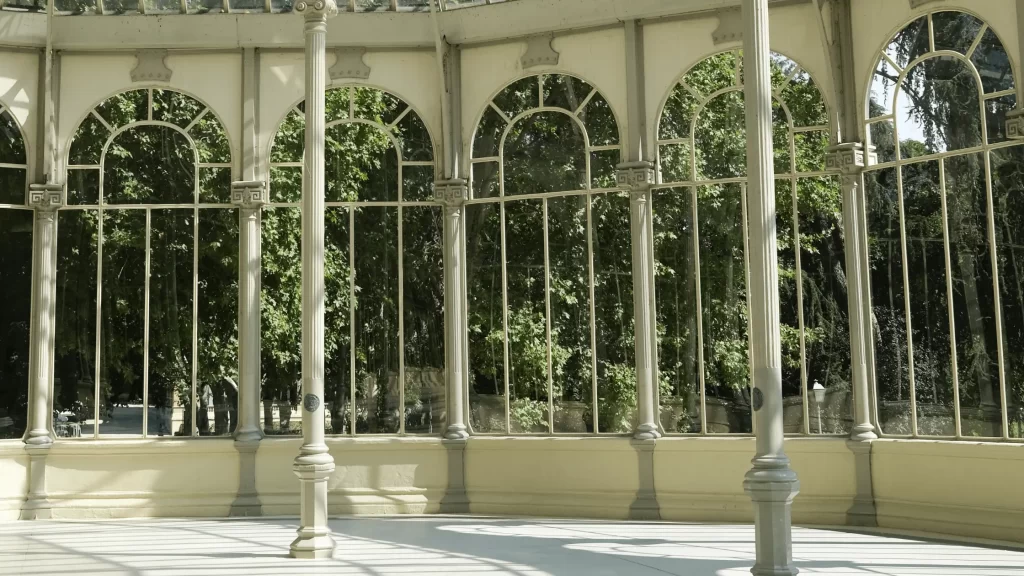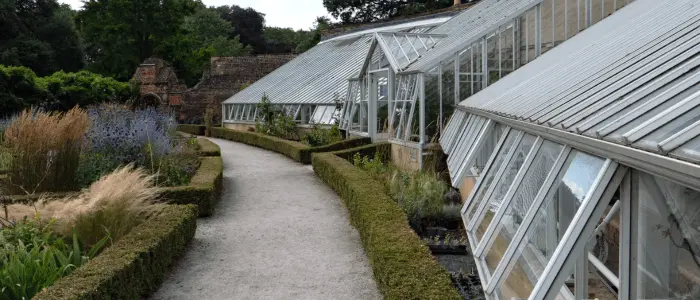Introduction: Understanding the Need for a Quieter Conservatory!
You must need a Quieter Conservatory, because having a peaceful and quiet space in your home is essential for relaxation and well-being. It is a place where you can escape from the noise and chaos of everyday life and find solace in tranquility. However, many homeowners find that their conservatories, which are meant to be a sanctuary, are often plagued by noise. Whether it’s the sound of traffic, neighbors, or even wildlife, the noise can be disruptive and detrimental to your mental and physical health.
Noise pollution has been linked to a range of health issues, including stress, anxiety, and sleep disturbances. It can also have a negative impact on concentration and productivity. Therefore, it is crucial to find effective solutions to reduce noise in your conservatory and create a peaceful environment where you can truly relax and unwind.

Identifying the Causes of Noise in Your Conservatory
If you want a quieter conservatory, it is important to first identify the sources of the noise. There are two main categories of noise sources: external and internal.
External noise sources include traffic, neighbors, and wildlife. If your conservatory is located near a busy road or in a densely populated area, you are more likely to experience high levels of external noise. Additionally, if you live in an area with a lot of wildlife, such as birds or squirrels, their sounds can also contribute to the overall noise level in your conservatory.
Internal noise sources include appliances, music, and conversation. If you have appliances such as a dishwasher or washing machine in your conservatory, they can generate a significant amount of noise. Similarly, if you frequently play music or have conversations in your conservatory, the sound can reverberate and amplify, making the space noisier.
The design and materials of your conservatory can also impact noise levels. For example, conservatories with large glass panels and hard surfaces tend to reflect sound, resulting in a louder and more echoey space. On the other hand, conservatories with sound-absorbing materials, such as carpets or curtains, can help to reduce noise.
Acoustic Curtains: Get a Quieter Conservatory!
One simple and effective solution for reducing noise in your conservatory is to use acoustic curtains. Acoustic curtains are specially designed to absorb sound and reduce noise levels. They are made from thick, dense materials that help to block out external noise and prevent sound from echoing within the space and help you to make a quieter conservatory.
Acoustic curtains work by absorbing sound waves and preventing them from bouncing off hard surfaces. They are typically made from materials such as velvet or heavy-duty fabric, which have excellent sound-absorbing properties. The curtains are often lined with a layer of acoustic foam or insulation, which further enhances their noise-reducing capabilities.
Using acoustic curtains in your conservatory has several benefits. Firstly, they can significantly reduce external noise, making your conservatory a quieter and more peaceful space. Secondly, they can help to improve the acoustics within the conservatory by reducing echo and reverberation. This is particularly beneficial if you use your conservatory for activities such as listening to music or watching movies. Lastly, acoustic curtains can also provide insulation, helping to keep your conservatory warm in the winter and cool in the summer.
When choosing acoustic curtains for your conservatory, it is important to consider factors such as the thickness and density of the fabric, as well as the size and shape of the curtains. Thicker and denser curtains will provide better noise reduction, while larger curtains that cover the entire window will be more effective at blocking out external noise. Additionally, consider the color and design of the curtains to ensure they complement your conservatory decor.

Soundproof Blinds: An Effective Way to Get a Quieter Conservatory!
Another effective solution for reducing noise in your conservatory is to use soundproof blinds. Soundproof blinds are specially designed to block out external noise and create a quieter environment. They are made from materials that have excellent sound-absorbing properties, such as thick fabric or foam.
Soundproof blinds work by creating a barrier between the outside noise and your conservatory. They are typically made from multiple layers of fabric or foam, which help to absorb sound waves and prevent them from entering the space. The blinds are often fitted tightly to the window frame to minimize any gaps where sound can leak through.
Using soundproof blinds in your conservatory has several benefits. Firstly, they can significantly reduce external noise, making your conservatory a more peaceful and relaxing space. Secondly, they can provide privacy by blocking out the view from outside. This is particularly useful if your conservatory is overlooked by neighbours or if you live in a busy area. Lastly, soundproof blinds can also provide insulation, helping to keep your conservatory warm in the winter and cool in the summer.
When choosing soundproof blinds for your conservatory, it is important to consider factors such as the thickness and density of the fabric, as well as the size and shape of the blinds. Thicker and denser blinds will provide a Quieter Conservatory, while larger blinds that cover the entire window will be more effective at blocking out external noise. Additionally, consider the color and design of the blinds to ensure they complement your conservatory decor.

Double Glazing: A Long-Term Solution for a Quieter Conservatory!
If you are looking for a long-term solution to get a quieter conservatory, double glazing is an excellent option. Double glazing involves replacing your existing windows with two layers of glass separated by a gap filled with air or gas. This creates an effective barrier against noise, as the two layers of glass help to absorb and block out sound waves.
Double glazing works by reducing the amount of sound that can pass through the windows. The two layers of glass act as a buffer, absorbing and reflecting sound waves, preventing them from entering your quieter conservatory. The gap between the two layers of glass also helps to further reduce noise transmission, as it acts as an additional barrier.
The benefits of double glazing for noise reduction are significant. It can significantly reduce external noise, making a quieter conservatory and more peaceful space. This is particularly beneficial if your conservatory is located near a busy road or in a noisy neighbourhood. Additionally, double glazing can also provide insulation, helping to keep your conservatory warm in the winter and cool in the summer.
The cost of double glazing will depend on factors such as the size and number of windows, as well as the type of glass and frame you choose. It is recommended to get quotes from multiple suppliers to ensure you get the best price. The installation process typically involves removing the existing windows and replacing them with the double glazing units. It is important to hire a professional installer to ensure the windows are fitted correctly and provide maximum noise reduction.

Weatherstripping: Sealing the Gaps to Minimize Noise
One often overlooked solution for a quieter conservatory is weatherstripping. Weatherstripping involves sealing the gaps and cracks around windows and doors to prevent noise from entering your conservatory. It is a simple and cost-effective way to minimize noise and create a quieter environment.
The importance of sealing gaps and cracks in your conservatory cannot be overstated. Even small gaps can allow noise to enter your conservatory, undermining your efforts to create a peaceful and quiet space. Weatherstripping involves using materials such as foam tape or rubber seals to fill in these gaps and create a tight seal.
Weatherstripping works by preventing noise from entering your conservatory through gaps and cracks. The materials used for weatherstripping are typically soft and flexible, allowing them to conform to the shape of the gaps and create a tight seal. This helps to block out external noise and create a quieter environment.
When weatherstripping your conservatory, it is important to thoroughly inspect all windows and doors for gaps and cracks. Pay close attention to areas where the frame meets the glass, as this is a common area for gaps to occur. Measure the size of the gaps and choose weatherstripping materials that are appropriate for the size and shape of the gaps. It is also important to clean and dry the surfaces before applying the weatherstripping to ensure a secure and long-lasting seal.

Insulation: Keeping the Noise Out and the Heat In
Insulation is another effective solution for reducing noise in your conservatory. Insulation works by absorbing sound waves and preventing them from entering your conservatory. It also helps to keep your conservatory warm in the winter and cool in the summer, making it a worthwhile investment.
There are several types of insulation available for noise reduction, including fiberglass, cellulose, and foam. Fiberglass insulation is the most common type and is made from tiny glass fibers that trap air and absorb sound. Cellulose insulation is made from recycled paper and has excellent sound-absorbing properties. Foam insulation is made from polyurethane or polystyrene and is particularly effective at reducing noise.
The benefits of insulation for noise reduction are significant. It can significantly reduce external noise, making your conservatory a quieter and more peaceful space. This is particularly beneficial if your conservatory is located near a busy road or in a noisy neighbourhood. Additionally, insulation can also provide thermal insulation, helping to keep your conservatory warm in the winter and cool in the summer.
The cost of insulation will depend on factors such as the size of your conservatory and the type of insulation you choose. It is recommended to get quotes from multiple suppliers to ensure you get the best price. The installation process typically involves fitting the insulation between the walls, ceiling, and floor of your conservatory. It is important to hire a professional installer to ensure the insulation is installed correctly and provides maximum noise reduction.
Furniture and Decor: Choosing Noise-Absorbing Materials
The furniture and decor you choose for your conservatory can also have an impact on noise levels. Certain materials have better sound-absorbing properties than others, and incorporating them into your conservatory can help to reduce noise and create a quieter environment.
When choosing furniture for your conservatory, opt for materials that are soft and plush, such as upholstered sofas and armchairs. These materials have excellent sound-absorbing properties and can help to reduce noise. Avoid materials that are hard and reflective, such as glass or metal, as they can amplify sound and make your conservatory noisier.
In terms of decor, there are several noise-absorbing materials that you can incorporate into your conservatory. Carpets and rugs are excellent at absorbing sound and can help to reduce noise levels. They also add warmth and comfort to your conservatory. Curtains or blinds made from thick, heavy fabric can also help to absorb sound and reduce noise. Additionally, consider adding acoustic panels or wall hangings made from sound-absorbing materials to further enhance noise reduction.
Plants: A Natural Solution for Sound Absorption
Plants are a natural and aesthetically pleasing solution to get a quieter conservatory. They have excellent sound-absorbing properties and can help to create a quieter and more peaceful environment.
Plants work by absorbing sound waves and preventing them from bouncing off hard surfaces. The leaves and branches of plants act as natural sound absorbers, helping to reduce noise levels. Additionally, plants can also help to improve air quality and create a healthier environment in your conservatory.
When choosing plants for noise reduction, opt for varieties that have large, dense leaves and branches. These plants are more effective at absorbing sound waves. Some examples of plants that are particularly good at reducing noise include rubber plants, fiddle-leaf figs, and peace lilies. Place the plants strategically around your conservatory to create a barrier against noise and create a more peaceful environment.

Conclusion: Enjoying a Peaceful and Quieter Conservatory All Year Round!
In conclusion, having a peaceful and quieter conservatory is essential for relaxation and well-being. Noise pollution can have a negative impact on your mental and physical health, so it is important to take steps to reduce noise in your conservatory.
There are several solutions available for noise reduction in your conservatory. Acoustic curtains and soundproof blinds are simple and effective ways to absorb sound and block out noise. Double glazing provides a long-term solution for reducing noise and improving insulation. Weatherstripping helps to seal gaps and cracks, minimizing noise transmission. Insulation keeps the noise out and the heat in, creating a quieter and more comfortable environment. Choosing furniture and decor made from noise-absorbing materials, such as carpets and curtains, can also help to reduce noise levels. Finally, incorporating plants into your conservatory decor is a natural and aesthetically pleasing way to absorb sound and create a more peaceful environment.
By implementing these solutions, you can enjoy a peaceful and quieter conservatory all year round. Creating a quiet and relaxing space will not only improve your mental and physical health but also enhance your overall quality of life. So take the necessary steps to reduce noise in your conservatory and create a sanctuary where you can truly unwind and find solace in tranquility.
Related articles:
- 11 Soundproofing Tips for Creating a Peaceful Baby Room!
- 10 Ways Of How To Stop Door From Slamming? Follow These Simple Ways!
- 13 Ways to Soundproof Duct or HVAC – Get Rid Off The Noisy Air Ducts Easily!
- 10 Simple Tricks to Prevent Noise Through Walls.
- How to Soundproof a Ceiling – Zero Noise From Upstairs.
- How to reduce your annoying bathroom echoes?
